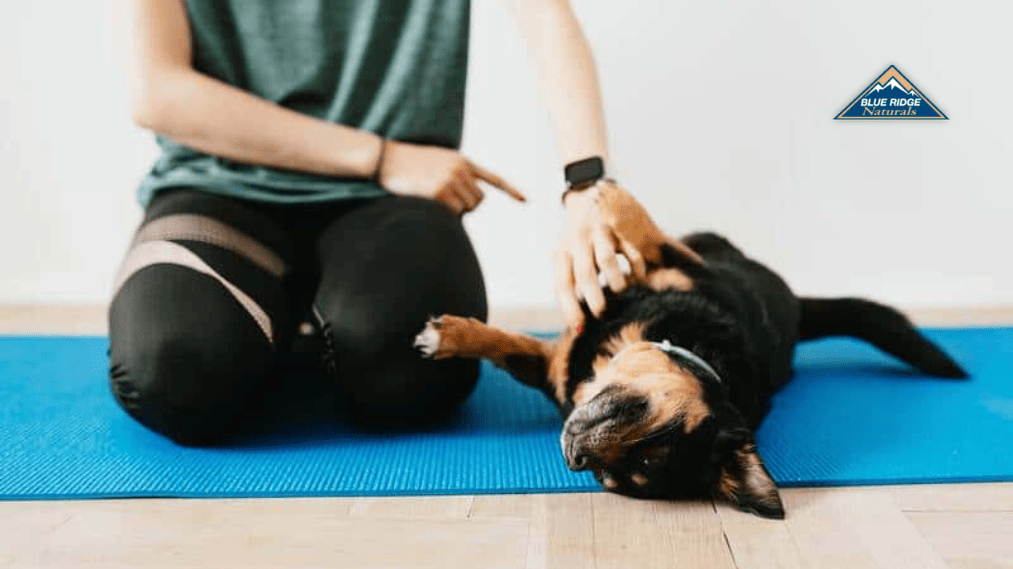Do you ever ask yourself those doggone dreaded questions like, “Where did my dog pick up this bad habit?” or “Why haven’t I noticed their naughty behavior until now?” If so, you’re among countless other dog parents who are in the same situation: trying to retrain their dog.
Unfortunately it’s common for dogs to pick up bad habits along the way, regardless of past training. With that said, don’t get discouraged from learning how to retrain your dog! Most dogs are able to retrain at any stage in their lives. With patience, persistence, and some hearty praise, you’ll be on your way to a properly-trained pup in no time!
Preparing To Retrain Your Dog
When you think about retraining your dog, you might wonder, “Where do I even begin?” Retraining Rover isn’t done overnight, and isn’t always a walk in the park. But it can be done. Below is a checklist of ways to prepare before giving your pup a behavior rebuild.
- Take your dog in for a check-up: Health problems could be the cause of a gradual change in behavior, so it’s best to ensure there are no underlying conditions before you plan to retrain your dog.
- Revisit basic commands: Go back to basics (sit, stay, lay) with your dog while you learn to redevelop a sense of leadership that may have gone stagnant over the years.
- Exercise is key to help release energy: Another way to retrain your dog is by taking your dog out for a quick walk or run around the park can help maintain focus and work up an appetite for their training treats!
- Keep the treats on deck at all times: Dogs respond better to rewards than they do punishments. Practice positive reinforcement with some hearty snacks, like our Salmon Topper Trainer Treats.
How To Set Your Dog Up For Success

One of the biggest factors on retraining your dog is getting everyone in the household on board. In order for your dog to realize the attention they seek is no longer warranted, it’s crucial that every family member practices the same training techniques.
For example, if you’re trying to teach a dog to stop begging for food, each family member must agree to ignore the dog and stop feeding it table scraps. Over time, and once rewarded for not begging, the dog will realize that your dinner time is not a time for sharing. This won’t work if one family member gives in to those puppy eyes and slips the dog some savory sustenance. Here are a few other helpful tips:
Keep Training Sessions Short
Dogs do not have long attention spans, so it’s best to set two 5-10 minutes training sessions aside to maintain peak concentration. This is plenty of time for your pup to retain the information needed to uphold the exercises they learn.
Be Consistent
Getting everyone in the house on board is vital, but to retrain your dog, consistency over time is also key. Your dog will catch on if any of your house rules aren’t regularly followed through or reinforced. Be sure to keep each rule and expectation consistent in order for bad behavior to subside. Not to mention, Fido will likely follow any command when consistently praised for his good behavior!
End On A Positive Note
A training session that ends in positive reinforcement will only motivate your dog to want to learn more. So when trying to retrain your dog, always end each session on a high note so they don’t lose interest. If your dog is having trouble mastering a command, go back to basics and give them a skill they’ve already mastered, like “sit”. Be sure to praise them for sitting and revisit other commands in a later session.
Other Things To Keep In Mind When Retraining Your Dog
It’s no question dogs are motivated by food. But like humans, dogs are even more motivated when given high-quality food. When retraining your dog, try substituting dry kibble and packaged treats with high-quality snacks. This may lead to faster responses and more willingness to learn. Potent scents like salmon and peanut butter are much more enticing and jam-packed with natural ingredients.
Just as we continue learning throughout our lifetime, training a dog never ends. Mastering “go to bed” or the perfect “lay down” position may seem as though your job is done, but training is far from over. Communication over time is key to consistent good behavior. It’s vital these behaviors are reinforced with rewards over the course of your dog’s life to ensure they are here to stay!
When you finally know how to retrain your dog, it’s important to remain level-headed and patient. Although this isn’t your pup’s first rodeo, your frustration may lead to poor results as you may forget to reward your dog for good behavior. When your dog starts receiving corrections without rewards, it could begin to display bad behavior. At the end of the day, it’s important to remember that practice makes perfect, praise is important, and yummy dog treats certainly help in getting the job done!

